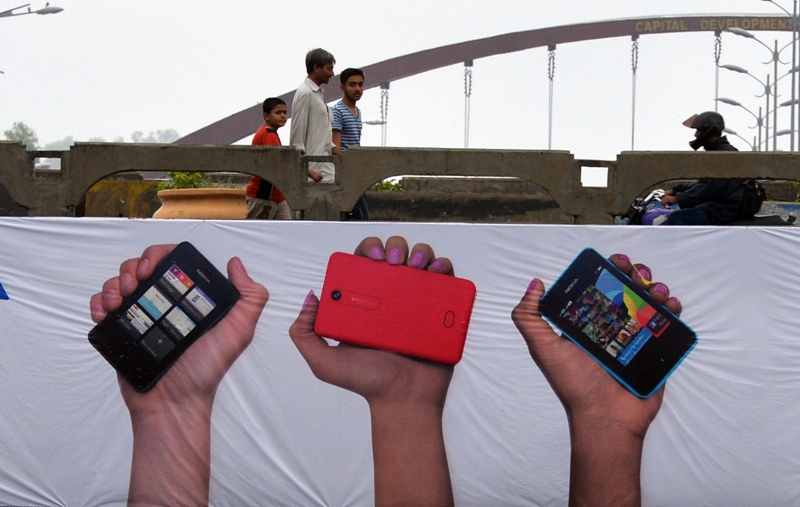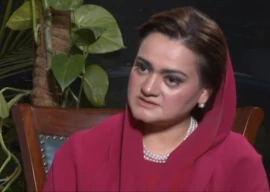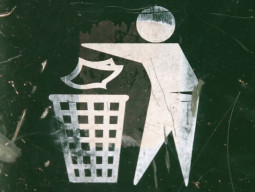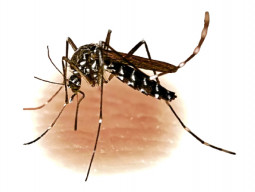
Even Afghanistan, Pakistan's far less developed western neighbour with a weaker economy and more fragile state, has the technology.
But Pakistani consumers struggle to transfer data by phone, video streaming is often interrupted - although technically YouTube is banned - and video calls problematic.
Two months after the new government took office, there is little sign that the process will start soon.
Pakistan's state minister for information technology Anusha Rehman told AFP that the auction alone could take six to eight months.
"The base price for 3G licences is not set yet. Only once it is done will I be able to give a figure on how much revenue will be generated by the licences sale," she said.
But first the Pakistan Telecommunication Authority (PTA) needs to be constituted and Rehman conceded there could be substantial delays.
"I am not sure how long it is going to take because the appointment of members have to be made by the cabinet," she said.
A senior civil servant initially told AFP that key appointments to the PTA were expected to be finalised in July. The first half of August in Pakistan is dominated by religious and national holidays.
Prime Minister Nawaz Sharif, elected for a historic third term in May, faces the daunting challenge of bringing down an 8.8 percent budget deficit, yet his first budget was conservative.
He offered no major tax reforms and within weeks, his government was forced to seek a $5.3 billion loan from the International Monetary Fund: enough only to keep on top of old loan repayments.
Finance Minister Ishaq Dar sought to fend off some criticism about the lack of tax reform by saying that a 3G auction would fetch a "considerable amount of foreign exchange".
Cheap mobile phone telephony took Pakistan by storm in the early 2000s and according to the PTA there are more than 122 million mobile phone subscribers -- or 68.6 percent of the population.
PTA officials estimate that a 3G auction could raise $1 billion in annual licence fees, which could be ploughed back into reducing the crippling $5 billion circular debt in the energy sector.
But delays are not the only problem.
"The previous government could not auction 3G licences because it wanted to bypass the standard tendering practices," the official said on condition of anonymity.
"There was infighting within the PTA over the auctioning of licences as the previous government wanted to bypass standard procedures and there was resistance by the members which delayed the process," the official said.
Raza Rabbani, senator from the Pakistan Peoples Party, has criticised the inclusion of 3G licence sale proceeds in the first budget of the Sharif government.
"These are illusionary figures. There is nothing concrete," he told AFP.
Of the five mobile phone companies in Pakistan, only Oslo-based Telenor has so far expressed public interest in acquiring a 3G licence, saying it could be operationally ready at the end of 2013.
"Telenor Pakistan is presently going through a massive network modernisation exercise which is expected to finish by the end of this year and is essential in making our state-of-the-art network 3G, 4G and LTE enabled," a company official told AFP.
He said the technology would drive prosperity and that increasing Internet penetration by just 10 percent would raise GDP by 1.5-1.6 percent.
"It is a paradigm shift from voice to data that will open many doors for GSM operators in the country to serve their customers through innovative avenues," the official said.
Shahzad Ahmad, country director of Bytes for All, an independent technology think tank, says Pakistan should forget 3G and move directly to more advanced 4G LTE bands.
But he also called for clean bidding.
"The process should be transparent so that Pakistan gets a better price for its asset and ensure that there is no corruption," he told AFP.
"So far there is no transparency in the process, nobody knows how many licences are going to be auctioned and to whom?" he added.
Ahmad said that 4G technology will speed up telecommunication in Pakistan and create new jobs in online media content creation.
Consumers seem unfazed, saying they already have to pay more than 40 percent taxes and service charges on recharges and calls.
"The amount of taxes on mobile phone calls is insane. I recharge a 100 rupee card and get only 60 rupees credit. The rest all goes into taxes, duties and service charges," construction worker Mohammad Afzal, 35, told AFP.
COMMENTS (14)
Comments are moderated and generally will be posted if they are on-topic and not abusive.
For more information, please see our Comments FAQ






1732617223-0/Untitled-design-(69)1732617223-0-270x192.webp)










india, afghanistan, bangladesh are on 3g/4g and pakistan is still on 2G. Jamhuriat khappay!
Pakistan must launch 3g or 4g service as earliest as possible. And this is not a big deal . Here in india the state owned operator BSNL has even scrapped the 2g or edge network for internet users and made the 3g as the base for using internet and guys speed is awesome... Also 3g tariff war (Rs 100/gb or less) among operators are also going on . infact reliance is going to provide Rs10/gb on their 4g network from early 2014.
GSM operators targeting for 3G and companies like PTCL, Witribe going for 4G LTE. Threating the survival for the GSM operators. Warid is again on sale. Real challenge is to moderanize the mobile back hual network and access network. Zong taking lead on everyone having 3G ready access network. Telenor and Mobilink are currently busy in the upgtadation through Chines vendors threating jobs for Pakistanis working there. Govt not interested at all. So WLAN is becoming more suitable for GSM operators to back haul mobile traffic over it, they are working on it. Now speed and bandwidth matters people hardly care what is 3G, 4G, WiMax or WLAN. General public knows 3G by the name 3G EVO by PTCL, its already there. Ufone becoming lucky to use PTCL new metro network for mobile backhaul creating huge threat for GSM operators.
Whereas Dual-channel HSPA can reach 42 Mbit/s theoretical, and single-channel HSPA reaches 21Mbit/s on most networks that use the technology. There's a lot of difference between theoretical 1Mbps (which in real-life usage would deliver perhaps 500 kbps)...I regularly get 14.4 Mbps on my HSPA-3G modem that delivers my internet connection...
There's no point spending large amounts of money for incremental gains in a redundant technology. Most mobiles sold now are 3G compatible, and it makes perfect sense to switch on 3G (UMTS) in Pakistan.
Mr Ishaq Dar clearly stated in June that Etisalat stuck up payment of about $800 Million of PTCL sale will be resolved in 10 days.What happened as over 40 days have passed!.
Selling 3G spectrum is not such a difficult thing that country cannot get it going ; this should be fast tracked and concluded by December 2013
@Khurram Awan: More important than the definition of 2G and 3G is the fact that Evolved Edge has theoretical maximum of 1Mbps, which in reality would be between 500-600 Kbps. This is in no way a comparable alternative to 3G where you can get upwards of 8Mbps.
My fellow Pakistanis Countries like Ghana and moving to LTE 4g and our govt is still debating that should we have 3g or should we not bothered at all. What a shame.
http://www.biztechafrica.com/article/4g-lte-network-ghana/6421/
There is a massive difference between 3G and EDGE.
On my connection in India I get 3G, but sometimes if the signal is weak (if I'm inside a big building for example) then it switches to EDGE, and the difference is highly noticeable. My 3G speed is about 7-8Mbps (using Speedtest.net) but less than 200Kbps on EDGE.
@Abbas Khan: @Twister: Well I will stick to my point but you need further knowledge. I consider EDGE as Almost 3G. But anyone of you ever studied IMT2000/3G Standard and Specifications ???. EDGE in my view is almost 2.9G or 2.75G and if you will meet any Foreign Technical Experts then all will tell you that EDGE is almost based on 3G Standard despite different radio interface.. Yes i agree that it is based on GPRS system but it meets many specifications of 3G Standard. Also since in the past I have worked on Evolved EDGE or EDGE II so I can safely state with Affirmation that Evolved EDGE could reach Realistic data rates of 1MB/s peak Bandwidth and kindly study Evolved EDGE or EDGE II that encompass many techniques of HSPA+ and then comment about slow data rates.
EDGE is not 3G by any definition. Specially the darn slow 20-100 kilobits we see on most mobile carriers in Pakistan. Please don't disgrace the word 3G by using it for these local companies services.
No it's not. EDGE is 2.5G technology, limited in most implementations to around 300Kbps. 3G is UMTS/WCDMA, and current versions of 3G ("3.5G") use HSPA for high data speeds. Dual-channel HSPA can reach speeds of up to 42Mbps (that's what Telstra is delivering here), but even the "normal" HSPA 3G is capable of speeds around 10 Mbps.
LTE (4G) is a different technology altogether; it is only a data carrier (it can't carry voice until the VoLTE protocol is finalised, and that's some time away), and the phone still needs to maintain a UMTS or GSM connection for voice.
Interestingly we are already using 3G services but our government officials call it 2G. We have WIMAX and W-CDMA2000 infrastructure that is essentially 3G in my view. Moreover every Mobile company is already providing Enhanced Data rates for GSM Evolution (EDGE) and that is a 3G technology according to ITU's ( International Telecommunication Union) 3G Definition.
I think getting 3G is not a bad idea but the way they are doing it will take ages to reach to such point so i suggest forget 3G and LTE, think about LTE-A
where there You Tube is banned for months... where all the positive students suffer learning due to this ban...... you should not expect 3G.... world is on 4G LTE right now.